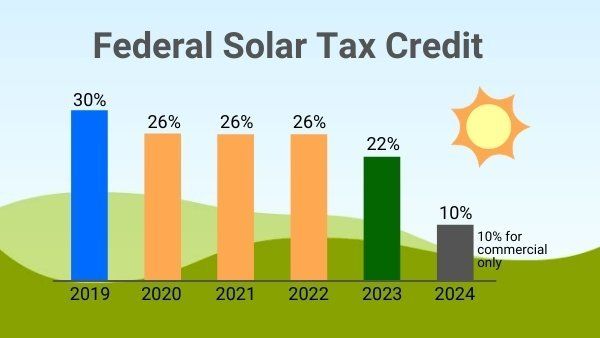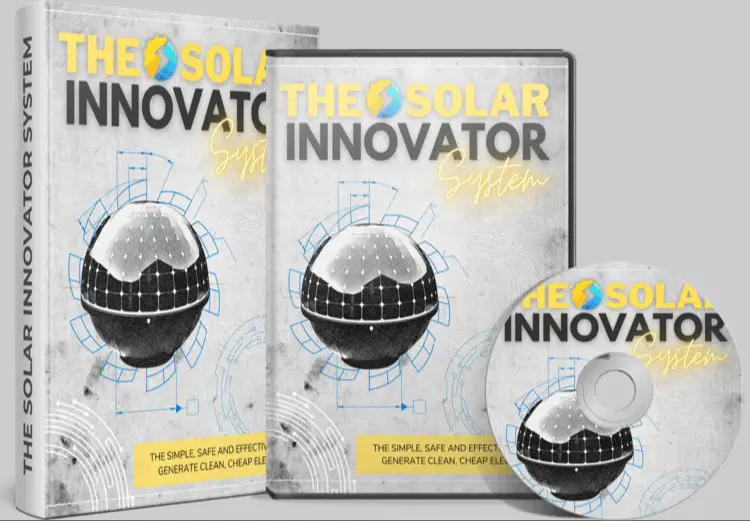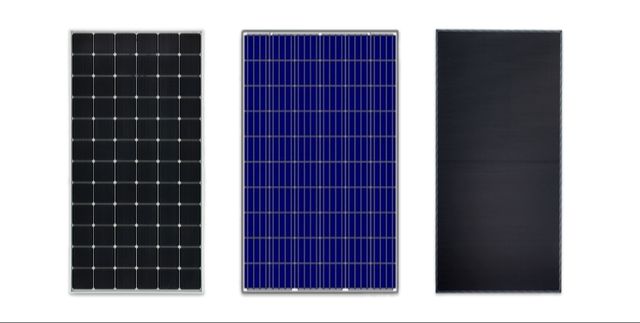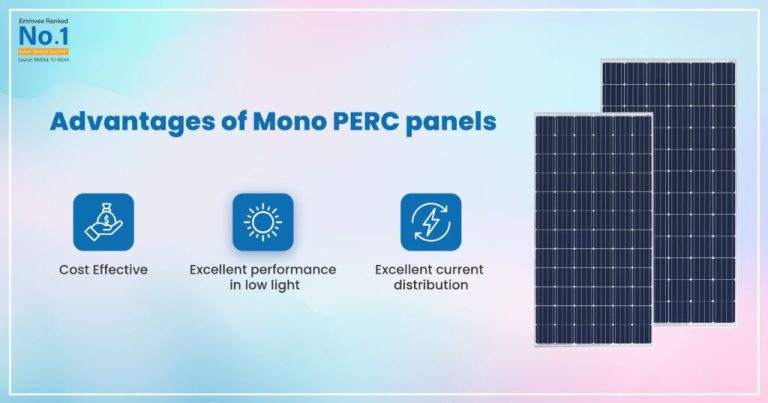Which Of The Following Can Convert Solar Energy To Electrical Energy?
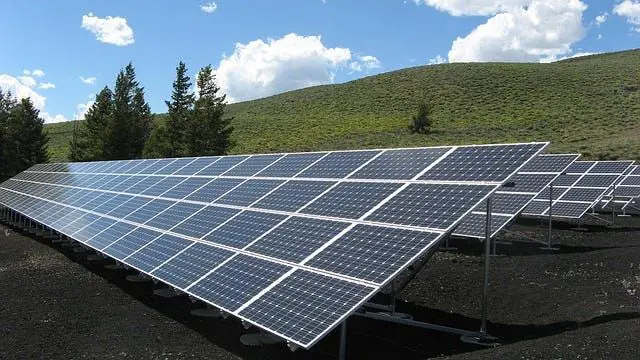
Solar energy is radiant light and heat from the sun that can be harnessed using various technologies. The goal of solar energy conversion is to convert the sun’s energy into useful forms of energy such as electricity.
There are several technologies capable of converting solar energy into electricity, including:
- Photovoltaics
- Concentrated solar power
- Solar thermal technologies
- Artificial photosynthesis
- Solar fuels
- Solar sails
This article will provide an overview of each of these solar energy conversion technologies, their capabilities, latest research, and comparative assessment.
Photovoltaics
Photovoltaic (PV) cells, also known as solar cells, are devices that convert sunlight directly into electricity (Source). They are made of semiconducting materials like silicon that exhibit the photovoltaic effect – when sunlight hits the cell, it knocks electrons loose, allowing them to flow freely and produce an electric current. The PV cell has one or more electric fields that act to force electrons freed by light absorption to flow in a certain direction, creating a direct current that we can harness. PV cells are often combined into modules that hold many cells, and arrays of modules can be linked to produce more electricity.
PV cells have many advantages – they have no moving parts, require little maintenance, and work silently to convert sunlight into electricity directly without any intermediate steps. Their biggest disadvantage is their relatively low efficiency – most mass market PV cells operate under 20% efficiency. Significant research is focused on increasing PV efficiency and reducing manufacturing costs further.
Today, PV cells power anything from small consumer gadgets to the large utility-scale “solar farms” providing electricity to the grid. Their small modular nature allows them to be flexibly integrated into buildings and vehicles, not just standalone structures. PV cells are a major pillar of renewable energy and crucial to transitioning away from fossil fuels.
Concentrated Solar Power (CSP)
Concentrated solar power (CSP) systems use mirrors or lenses to concentrate a large area of sunlight onto a receiver.1 The concentrated light is converted to heat which drives a steam turbine or heat engine connected to an electrical power generator.2 There are four main types of CSP systems:
- Parabolic trough systems use curved, U-shaped mirrors to focus sunlight on a receiver tube containing a heat transfer fluid.
- Power tower systems use a field of flat, movable mirrors (called heliostats) to concentrate sunlight onto a receiver on top of a tower.
- Parabolic dish systems use dish-shaped mirrors and a Stirling engine/generator at the focal point.
- Linear Fresnel reflector systems use long, thin segments of mirrors to concentrate sunlight onto fixed receivers.
The main advantages of CSP include the ability to integrate thermal storage, allowing power generation when sunlight is unavailable. CSP systems also have great potential for largescale electric power generation. Some drawbacks are the relatively low sunlight-to-electricity efficiency and the large land area required.
CSP is currently used in utility-scale solar thermal power plants. Continued innovations aim to improve efficiency and lower costs for wider deployment.1
Solar Thermal
Solar thermal systems convert sunlight into heat energy using solar collectors. These collectors absorb the sun’s radiation and transfer the heat to a fluid passing through them, like water or thermal oil. The heated fluid can then provide energy for various applications.
There are different designs of solar thermal collectors including flat plate collectors, evacuated tube collectors, parabolic troughs, linear Fresnel reflectors, parabolic dishes and solar towers. Flat plate and evacuated tube collectors are commonly used for residential water and space heating. Parabolic troughs, dishes and solar towers with heliostats are used in larger scale solar thermal plants to produce steam to generate electricity.1
Compared to solar photovoltaics which directly convert sunlight into electricity, solar thermal is generally less expensive but requires good solar resources and heat storage or backup heating systems for 24-hour operation. Solar thermal systems can provide heat for domestic hot water, space heating, pool heating as well as industrial process heat and electricity generation.
Some advantages of solar thermal technology include:2
- Lower costs than solar PV
- Ability to store heat energy
- Variety of applications from residential to industrial scale
Some disadvantages are:2
- Dependent on good solar resource
- Requires backup heating system
- Lower efficiency than solar PV
Ongoing research is focused on improving efficiency through advanced heat transfer fluids, better system controls and integration with energy storage technologies.
Artificial Photosynthesis
Artificial photosynthesis aims to mimic the natural process of photosynthesis that occurs in plants, where sunlight is converted into chemical energy. This is achieved by using man-made photoelectrochemical cells that utilize sunlight to split water into hydrogen and oxygen. The hydrogen can then be used as a fuel source. Though artificial photosynthesis is still an emerging technology, it has the potential to provide a clean, renewable energy source if it can be scaled up efficiently.
Researchers are exploring various semiconductor materials such as titanium dioxide, which can be paired with catalysts and used to absorb sunlight and drive the water-splitting reaction. Controlling factors like the band gap of the semiconductor to match the solar spectrum, transporting charge carriers efficiently, and preventing corrosion of components remain key challenges to making the process viable.
Artificial photosynthesis offers an attractive prospect for clean solar energy conversion and storage. But the technology is still in early lab stages and has not yet proven cost-competitive with other renewables. Overcoming durability and efficiency barriers to scale up devices will be critical next steps. If these challenges can be met, artificial photosynthesis could one day provide a sustainable fuel source using just sunlight, air and water.
Solar Fuels
Solar fuels are fuels created using sunlight, water, and carbon dioxide. The most common solar fuel is hydrogen. Solar fuels provide a way to store the energy from sunlight in chemical bonds.
Hydrogen gas and other solar fuels can be created through methods like electrolysis powered by solar photovoltaics or directly from sunlight using photocatalysts or photoelectrochemical cells. The hydrogen can then be stored and used to generate electricity in fuel cells when needed.1
One major advantage of solar fuels like hydrogen is their ability to store energy from intermittent sunlight to provide power on demand. Solar fuels can also often be directly used in existing infrastructure, like hydrogen fuel cell vehicles.2
However, producing cost-competitive solar fuels is still a challenge. Current research is focused on improving efficiency and lowering costs through new materials and processes.3 If economical production can be achieved, solar fuels could provide a clean, sustainable energy solution.
Solar Sails
Solar sails use sunlight to propel spacecraft through space without rocket fuel. They capture the momentum of photons from the Sun by reflecting them off a large, mirror-like sail made of lightweight material like Mylar or CP-1. The constant stream of photons hitting the sail can accelerate the spacecraft to high speeds through the radiation pressure exerted on the sail.
When photons are reflected off the sail, they impart their momentum to it through radiation pressure. This transfer of momentum causes the solar sail to be pushed gently but constantly away from the Sun. While the force on an individual photon is minuscule, the cumulative effect over the huge reflective surface area of the sail is enough to propel the spacecraft. The larger the sail area, the greater the acceleration from solar radiation pressure. This emission and reflection of photons creates a small but continuous thrust that can gradually accelerate a spacecraft to tremendous speeds without propellant.
Over time, light pressure on the solar sail can convert photon energy into enough kinetic energy to propel interplanetary and deep space travel. Solar sails are highly efficient for long journeys where continuous low thrust can eventually reach high speeds. While slow to accelerate, they can reach speeds over 100,000 mph, faster than conventional chemical rockets. Solar sailing has been proven by NASA’s NanoSail-D2 and the Planetary Society’s LightSail projects. With further advances in materials and sail designs, solar sails hold promise as a propulsion system for future deep space exploration.
Sources:
https://www.planetary.org/articles/what-is-solar-sailing
https://www.planetary.org/sci-tech/lightsail
Comparative Assessment
When comparing different solar energy conversion technologies, some of the key factors to consider are efficiency, cost, scalability, and limitations (Rossi, 2023).
In terms of efficiency, photovoltaics tend to have moderately high efficiencies around 15-20% for commercial silicon solar cells. Concentrated solar power systems can achieve higher efficiencies up to 35-40% by using mirrors or lenses to concentrate sunlight onto a small receiver. However, these concentrated systems require direct solar radiation and careful tracking of the sun (Mendonza, n.d.).
Regarding cost, photovoltaics have seen massive price declines over the past decade, making them highly cost-competitive with fossil fuels in many regions. However, concentrated solar power remains more expensive due to the extra mirrors, receivers, and tracking equipment required. Solar fuels and artificial photosynthesis technologies are still in early research stages and quite costly (Dehshiri, 2023).
In terms of scalability, photovoltaics can readily scale from small residential systems to large utility-scale solar farms. Concentrated solar is mainly suitable for larger utility-scale plants. Solar fuels and artificial photosynthesis approaches are still limited to lab-scale experiments and prototypes.
Some key limitations are that photovoltaics rely on sunny weather and only generate electricity when the sun shines. Concentrated solar requires direct sunlight and is unsuitable for cloudy climates. Most technologies do not yet provide energy storage for 24/7 power generation.
Latest Research
There have been several exciting new developments and breakthroughs in solar energy conversion technology in recent years. Researchers have focused on improving solar cell design and efficiency to get more electricity from sunlight.
One major advancement has been in perovskite solar cells. These new solar cells are made from inexpensive materials and can achieve conversion efficiencies comparable to traditional silicon cells, above 20% (1). Perovskites are especially promising for tandem solar cells paired with silicon.
Scientists have also made progress on solar cells that can harvest energy from the infrared/heat spectrum of sunlight. By using quantum dot materials, researchers were able to demonstrate solar energy conversion exceeding 29% efficiency (2). Capturing more of the solar spectrum could significantly boost the output of solar panels.
There are also ongoing efforts to develop solar panels that can generate electricity at night. Technologies being researched include thermoradiative cells that can generate power from radiative cooling, and devices made from thermally emissive materials (3). While more work is needed, nighttime solar shows intriguing potential.
In summary, from perovskites to quantum dots to nighttime generation, researchers are pioneering creative new approaches to improve solar energy conversion. These innovations could enable solar power to become an even more vital renewable energy source.
Sources:
(1) https://www.theguardian.com/environment/2023/jul/06/revolutionary-solar-power-cell-innovations-break-key-energy-threshold
(2) https://greenerideal.com/guides/renewable-energy/latest-developments-and-breakthroughs-in-solar/
(3) https://www.linkedin.com/pulse/advancements-solar-energy-technology-saurabh-singh
Conclusion
To summarize, there are a number of promising technologies that can convert solar energy into usable electrical energy. Photovoltaics, concentrated solar power, and solar thermal systems are the most well-established and widely used today. Artificial photosynthesis, solar fuels, and solar sails show potential but require more research and development to become commercially viable.
Looking ahead, as solar energy conversion technologies improve in efficiency and cost, we can expect to see continued growth in their adoption worldwide. With concerns about climate change and fossil fuel dependence mounting, solar energy offers a clean, renewable alternative for our energy needs. If technical challenges can be overcome, solar may one day become a primary source of energy globally.
More efficient photovoltaics, cheaper thermal storage, and breakthroughs in artificial photosynthesis could accelerate this transition. With sufficient investment and research, the future is bright for innovative solar conversion technologies that harness the nearly limitless energy potential of the sun.

